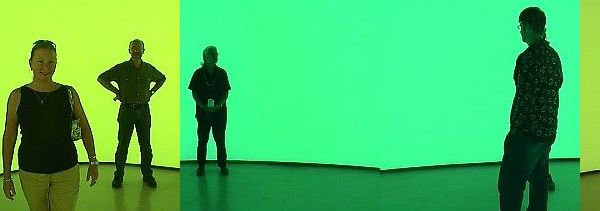2020.04.24
'future' in The Theory of Architecture
Paul-Alan Johnson, The Theory of Architecture: Concepts, Themes, & Practice (1994).
p.97 Despite a lifetime of rightly decrying esthetic dictatorship by bureaucrats, Seidler berates much recent Western rchitecture as "re-heated fake history" and superficial images with hideous clichés," giving the work of Ricardo Bofill a special serve as "the kind of architecture that totalitarian regimes of both left and right have always favoured," urging instead "restraint and distain for willful waste or physical or visual extravagance" as a more worthy creed for 'our time'. While they not subscribe to Seidler's strict view of contemporary architecture, many architects would still admit to seeing architecture as the rightful leader into the future.
p.115 To whom falls the responsibility for taking care of the rights of the disenfranchised, or those who are merely passengers on the social ride of life? Notwithstanding that the modernist zeal for an architecture-led future is now an illusion, one of the beliefs still animating architects is that it is they who should take this responsibility. And it is they who will make a difference through their intervention or intercession.
p.261 Shock waves were sent through the methodological community by Blake, Brolin and other writers and theorists declaring the breakdown of the modernist paradigm, although, like modernism itself, faith in the logic of method is hard to kill, and it has undergone a revival as artificial intellegence (AI) in design began to develop in the eighties. However, criticism is being leveled at the philosophical basis of AI, and its future may be under a cloud.
p.271 The assumption here is that, because some continuity has been observed in retrospect, continuity should inform the present and the future. The two major authoritarian concepts of continuity in architecture to be discussed in this chapter re historicism and determinism
p.273 Alan Colquhoun (1980:3-19) discerns three major kinds of historicism: historical determinism combined with relative truth, interest in past traditions and institutions, and the adoptation of historical forms. Most pertinent here is the doctrine and prevailing popular view that there are laws or principles of historical development, which Popper condemns for itas attempt at historical prediction. Within such a frame of predictability there are two seemingly distinct emphases, one seeking a future based in continuity from the past, the other seeking a present based in discontinuity from the past. What we will focus on here is the inclination to that inevitability that seeks to assume events as inevitable before they happen, as against the practical historical view of events as inevitable because they happened.
| |
p.273 The first kind of historicism is exemplified by Popper in Conjectures and Refutations (1963) as "the view that the story of mankind has a plot, and that we can succeed in unraveling this plot, we shall hold the key to the future" This a variation on another metaphors he used almost twenty years earlier in The Open Society and its Enemies (1945), where historicism is a quest "to find The Path on which mankind is destined to walk: it is to discover The Clue to History." This view of history is unitary and holds that there are lessons to be learned from history of the kind that will facilitate smooth transition into and implementations of the future. The future becomes a matter of guardianship by those in positions of influene or power, monitoring and nursing the present in relation to the past much as a flux enables solder to meld to metal.
p.275 There are many recent examples that give the lie to historicism by showing how events have occurred or means have become available to achieve things not considered possible initially, or by showing that the success of such events and means and the changes flowing from the success were completely unpredictable. For instance, the impact of iron and steel technology on building has gone way beyond what John Ruskin forecast when, in concluding his first Edinburgh lecture in 1853, he spoke about the unlikely impact of iron and glass in the future: "The forse of the image of the Corner Stone, as used throughout Scripture, would completely be lost, if the Christian and civilized world were ever extensively to employ any other material than earth and rock in their domestic buildings: I firmly believe that they will never will; but that as the laws of beauty are more perfectly established, we shall be content still to build as our forefathers built, and still to receive the same great lessons which such building is calculated to convey; of which one is indeed never to be forgotten."
p.276 "The history of science was regarded by Bacon as progeress, an accumulation of valuable experience derived from the past for the future develoment of society." --Marc Angelil (1989:69)
p.278 It was Popper who mounted the most potent criticisms against the logic of historical progress in social and political philosophy in The Poverty of Historicism (1957) by arguing that human society is not amenable to this kind of historical projection or prediction because all choice and responsibility we have is ours individually and is not necessarily binding on society. Architects have always had a vested interest in molding society to some vision of the future through their works, and so have simpy ignored this and similar arguments. Historicism continues unabated in the guise of a respect for continuity of the kind architects mean if they promote 'fit', 'context', and 'harmony' as the ground for their vision, and in a distain for continuity if it interferes with the proper emergence of 'an architecture of our time' as the ground for their vision.
| |
p.297 Architecture without direction seems inconceivable. Without a game plan, what is there for architecture to do? How will the game proceed? And yet there are Bernard Tschumi's pavilions in Le Parc ae la Villette, red-faced architecture--from exertion, not from bluching; no functions, no raison d'être, except as events unto themselves, folies bijou, folies bergère, enticing the sheep to follow as Mary did the cattle, "across the sands of De-." Determinations feeds determinism, de-termination--make no ends, de-terminism--make no small plans, de-constructiovism--make no plans for building the future, Que sera, sera.
p.301 "History begins with the handing down of tradition; and tradition means the carrying of the habits and lessons of the past into the future." --Edward H. Carr (1961:108)
p/374 Turning to architecture, position is the operative spatial aspect of the science or art of architecture, the placement of elements in space or surface by those elements. "Position, as the location of an idea or architectural construction, affirmatively asserts the connection between place and ideology." Disposition is the opposite of position, the inoperative, the taking down (in writing?) or laying aside (for future use?) of elements in space or on surfaces, the uncoupling of place and ideology.
p.377 Deconstructivism "gains all its force by challenging the very values of harmony, unity, and stability, and proposing instead a different view of structure: the view that the flaws are intrinsic to the structure" (Johnson and Wigley 1988:11). This position of the 'deconstructive' architectt as a modern Xipetotec, flaying traditional architectural values for new blood, may suit certain theortist and those architects confertable with the label, but it sits uneasily with most practitioners as a potential future.
p.381 The fracturing that was such an intrinsic part of the dymnamic of medieval building has become, in light of Renaissance holism and later modern classicism, the major site of the monsters of architecture: "Monsters are always loated in the joint between architectural elements," says Marco Frascari of the carvings in the portal margins and keystones of many older buildings; they "set the enigma of the construction of a transition ... the enigma of past and future architectural artifacts" (Frascari 1991:18). Along with the architettura di spoglio, the architecture of fragments taken from older architectures and used in vernacular and medieval architecture, which metaphorically dominates current architecture, the joint as the loation of division and fracture is one of Frascari's monsters.
| |
 
|

